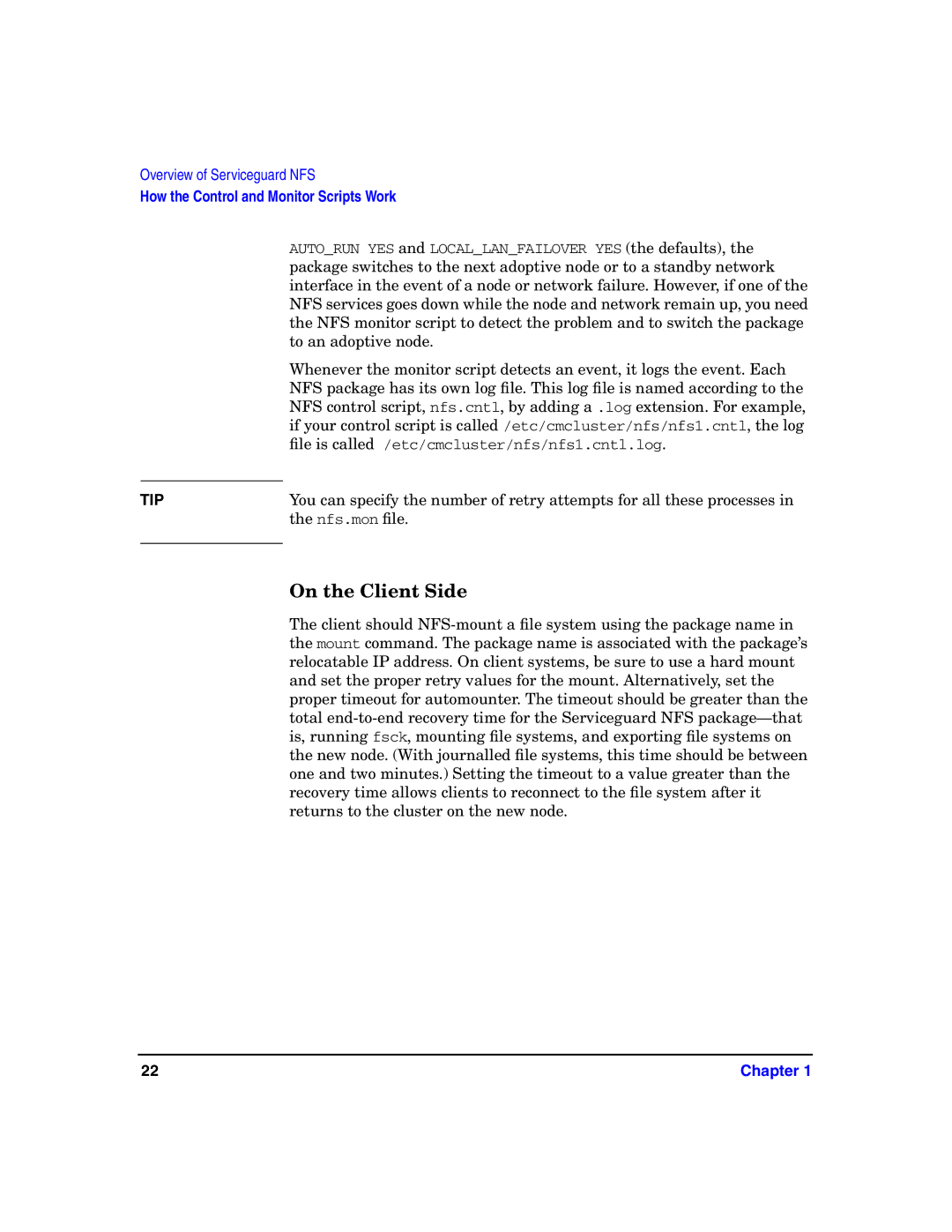
Overview of Serviceguard NFS
How the Control and Monitor Scripts Work
AUTO_RUN YES and LOCAL_LAN_FAILOVER YES (the defaults), the package switches to the next adoptive node or to a standby network interface in the event of a node or network failure. However, if one of the NFS services goes down while the node and network remain up, you need the NFS monitor script to detect the problem and to switch the package to an adoptive node.
Whenever the monitor script detects an event, it logs the event. Each NFS package has its own log file. This log file is named according to the NFS control script, nfs.cntl, by adding a .log extension. For example, if your control script is called /etc/cmcluster/nfs/nfs1.cntl, the log file is called /etc/cmcluster/nfs/nfs1.cntl.log.
TIP | You can specify the number of retry attempts for all these processes in |
| the nfs.mon file. |
|
|
On the Client Side
The client should
22 | Chapter 1 |
